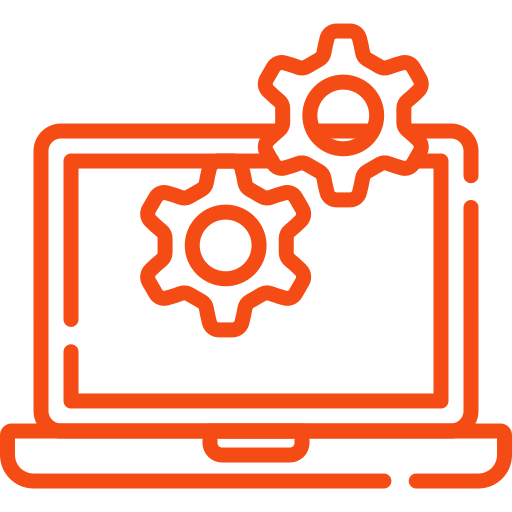Disability income protection is an essential consideration for entrepreneurs traversing the complexities of business ownership. Unexpected health challenges can disrupt both personal and business finances, making adequate coverage vital. Despite its importance, many misconceptions surround this type of insurance. Understanding the answer to what is disability income protection can empower business owners to make informed decisions. What factors should they consider when selecting a policy? The implications of these choices can be significant.
Key Takeaways
- Disability income protection is crucial for entrepreneurs to maintain financial stability during unexpected health challenges affecting their ability to work.
- It serves as a financial safeguard, providing replacement income to cover essential expenses like rent and daily living costs.
- Entrepreneurs should understand policy definitions of disability, benefit amounts, elimination periods, and coverage duration for adequate protection.
- Misconceptions about disability income protection can lead to inadequate coverage; it’s essential to seek professional advice and clarify policy details.
- Integrating disability income protection into the overall business strategy ensures a safety net, allowing focus on recovery and business continuity.
Understanding the Importance of Disability Income Protection for Entrepreneurs
Understanding the importance of disability income protection for entrepreneurs is essential, especially considering the unique challenges they face in maintaining financial stability. Unlike traditional employees, entrepreneurs rely heavily on their ability to work and generate income. A sudden disability can lead to significant financial strain, not only affecting personal finances but also jeopardizing business operations. Without adequate protection, an entrepreneur may struggle to cover operational costs, employee salaries, and personal expenses during recovery. Furthermore, the entrepreneurial journey is often characterized by high risk and uncertainty, making disability income protection a vital safety net. By securing this protection, entrepreneurs can focus on their recovery without the added stress of financial instability, ultimately promoting a healthier work-life balance and fostering resilience in their business endeavors.
What Is Disability Income Protection?
Disability income protection serves as a crucial financial safeguard for individuals who may be unable to work due to illness or injury. This type of insurance provides a replacement income, ensuring that essential financial obligations, such as rent, mortgage, and daily living expenses, can still be met during periods of incapacitation. Typically, benefits are paid monthly and can last for a specific duration or until the insured reaches retirement age. Entrepreneurs, in particular, benefit from this protection, as their ability to earn is directly tied to their health and productivity. By securing disability income protection, individuals can maintain stability and reduce the financial stress that accompanies unexpected health challenges, ultimately allowing them to focus on recovery and future business endeavors.
Common Misconceptions About Disability Income Protection
While many people recognize the importance of disability income protection, several common misconceptions can cloud their understanding of this essential insurance. One prevalent myth is that disability income protection is only necessary for traditional employees, neglecting its critical role for entrepreneurs. Additionally, some believe that disability income protection covers all types of disabilities, when in fact, policies often have specific definitions and exclusions. Another misconception is that the benefits are sufficient to replace an entire income, whereas they typically only cover a portion of lost earnings. Finally, many assume that obtaining such coverage is prohibitively expensive, overlooking the range of options tailored to various budgets. Addressing these misconceptions is crucial for entrepreneurs to make informed decisions about their financial security.

How to Choose the Right Disability Income Protection Policy
Selecting the appropriate disability income protection policy requires careful consideration of various factors that cater specifically to the unique needs of entrepreneurs. One of the primary aspects to evaluate is the definition of disability within the policy, as it can vary markedly between providers. Entrepreneurs should also assess the benefit amount, ensuring it covers essential business expenses and personal needs. Additionally, the elimination period and benefit duration play critical roles in determining financial security during recovery. Riders, such as cost-of-living adjustments, can enhance a policy’s value, while premium affordability is essential for long-term sustainability. Ultimately, a thorough comparison of options, along with consultations with insurance professionals, will aid entrepreneurs in selecting the most suitable disability income protection policy.
Steps to Implementing Disability Income Protection in Your Business Strategy
Implementing disability income protection as part of a business strategy is essential for safeguarding both personal and professional financial stability. Entrepreneurs should begin by evaluating their specific needs, considering factors such as income, expenses, and industry risks. Next, they should research various policies to identify the best coverage options tailored to their circumstances. Engaging a knowledgeable insurance broker can provide invaluable insights into the nuances of different plans. It is also important to educate employees about disability income protection, fostering a culture of security and support. Finally, integrating this protection into the overall financial plan guarantees that entrepreneurs can maintain their livelihood, enabling them to focus on growth and innovation while mitigating the risks associated with unforeseen disabilities.
Frequently Asked Questions
How Long Does It Take to Receive Disability Income Benefits?
The duration to receive disability income benefits varies, typically ranging from 30 to 90 days post-application. Factors influencing this timeline include the complexity of claims, required documentation, and the insurer’s processing speed.
Can I Get Disability Income Protection if I Have a Pre-Existing Condition?
Individuals with pre-existing conditions may still obtain disability income protection, but terms and premiums could be affected. Insurers typically assess the condition’s impact on overall health and ability to work when determining eligibility.
What Activities Are Covered Under Disability Income Protection Policies?
Disability income protection policies generally cover a range of activities, including work-related tasks and daily living functions. Specific coverage may vary, emphasizing the importance of understanding individual policy terms to guarantee adequate protection.
Is There a Waiting Period Before Benefits Start?
The waiting period before benefits commence varies by policy. Typically, it ranges from 30 to 90 days, requiring individuals to remain disabled for that duration before qualifying for disability income protection benefits.
Can I Combine Disability Income Protection With Other Insurance Policies?
Combining disability income protection with other insurance policies is generally possible. This strategy enhances overall coverage, allowing individuals to tailor their financial security, ensuring thorough protection against unforeseen circumstances that could impact their livelihood.
Conclusion
To summarize, disability income protection is an essential consideration for entrepreneurs seeking to safeguard their financial stability against unforeseen health challenges. By thoroughly understanding the nuances of disability income protection, dispelling prevalent misconceptions, and strategically selecting suitable policies, business owners can effectively mitigate risks to their personal and professional livelihoods. Implementing these protective measures not only fosters resilience within their ventures but also allows entrepreneurs to maintain focus on recovery and long-term success.
You May Also Like To Read:






